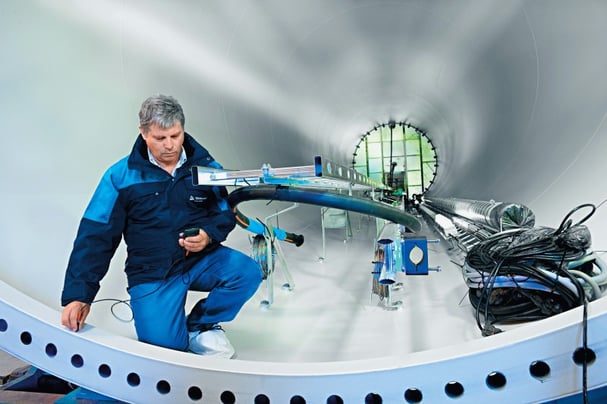
As a rule of thumb, wind turbines are designed to have a service life of 20 years. Extending the service life of wind turbines will result in an increase in revenue, however it may also mean higher operational and maintenance cost and a greater risk of structural failures such as dropping of parts, collapse of wind turbines, and fire. Hence it is important to determine whether wind turbines that have reached the end of their service life can continue to operate safely.
Independent third party organizations may be able to play an important role in providing a basis for judgement about how many years a wind turbine can continue to operate or whether it should be stopped and dismantled. Some European countries require wind turbine operators to have an independent laboratory perform such an investigation. TÜV Rheinland has been providing this service in many countries, including Germany. As an increasing number of wind turbines will reach the end of their design life in a few years’ time in Japan*1. TÜV Rheinland Japan launched this service to meet this increasing demand. Our first customer is Eco Power Co., Ltd. in Yamagata Prefecture in Japan.. We are currently inspecting the “Tachikawa Wind Power Research Institute Co., Ltd. first and Second Power Stations”, a wind farm that has been operating for 20 years.
Methodology to assess the remaining life of wind turbines
The assessment service is divided into two stages: on-site inspection and data analysis. During the on-site inspection, the inspector will visit the wind farm to check the condition of the facility. He will inspect the tower, foundation, nacelle, hydraulic equipment, safety unit, sensors, brake, control system, main frame, and blades. He will examine the operating condition, and look for damage, leaks, wear, corrosion, cracks and unusual noise. In addition, he will also use an endoscope to make a detailed check of the gearbox and main bearings to make sure the gears and bearings are still in good condition. He will take a sample of the gearbox oil to check for traces of worn metal, additives, and foreign material. The results of his analysis will be compiled as a report.
The data analysis will include examining the degree of component fatigue by comparing the present condition of the machine with its engineering drawings and specifications. The analysis is based on such data as the turbine’s total operating time, its current operating condition, capacity, rotor speed, local wind speed figures, and its maintenance and repair history.
Once the on-site inspection and data analysis are complete, a report is issued based on the general evaluation of those results. The report contains the results of a diagnosis of the turbine’s stability and durability, as well as an estimate of its remaining service life. This estimate is made with reference to its operating history and local wind conditions, in addition to the results of the on-site inspection and data analysis..
*1 There are 150 wind turbines which were established before 2000.
For more information on our Wind Turbine Certification solutions, please visit our website or contact us to speak to one of our experts.



